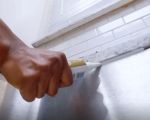- 1. Why You Should Repair a Broken Window Yourself
- 2. Simple Tools You’ll Need to Repair a Broken Window
- 3. Step-by-Step Guide to Repairing a Broken Window
- 4. Important Safety Tips for Window Repair
- 5. Common Issues You Might Face and How to Solve Them
- 6. When to Call a Professional for Window Repair
1. Why You Should Repair a Broken Window Yourself
Repairing a broken window can be a daunting task, but it's one that many homeowners can handle with the right tools and instructions. Not only is it a cost-effective solution, but taking on a simple home repair project like this can also give you a sense of accomplishment. Plus, with a little patience, you can often restore the window to its original condition without needing to hire a professional.
Whether your window is cracked, chipped, or shattered, repairing it yourself is a great way to save money and learn a new skill. In this article, we’ll walk you through how to repair a broken window using simple tools and materials that are easy to find. Let's dive in and learn how you can fix your window in no time!
2. Simple Tools You’ll Need to Repair a Broken Window
Before you begin repairing a broken window, it’s essential to gather the necessary tools. Luckily, the tools required for this task are fairly common and can be found at most hardware stores or online. Here’s what you’ll need:
1. Glazier’s Points: These small, metal clips help secure the glass into the window frame. You can find them at most hardware stores.
2. Putty Knife: A putty knife is essential for applying and smoothing out the glazing compound around the edges of the window.
3. Glazing Compound: This is a paste-like substance used to seal the edges of the window glass in the frame. It’s designed to keep the glass in place while also providing insulation against air leaks.
4. Replacement Glass: If the glass is completely broken, you’ll need to measure the window opening and get a piece of replacement glass that fits perfectly.
5. Safety Gear: Safety glasses and gloves are important to protect yourself from sharp glass edges and other debris while working on the window.
6. Hammer and Nails: A hammer and nails will be needed to secure the glazier's points and other components of the window frame.
3. Step-by-Step Guide to Repairing a Broken Window
Now that you have your tools ready, follow these simple steps to repair your broken window:
1. Remove the Broken Glass: Carefully remove any broken glass from the window frame. Wear gloves to protect yourself from sharp edges. Use pliers or a putty knife to lift out the broken glass shards.
2. Clean the Frame: Once all the glass is removed, clean the window frame of any old glazing compound, dust, or debris. This will create a clean surface for the new glass and glazing compound.
3. Measure and Cut the New Glass: Measure the dimensions of the window opening, and have a new piece of glass cut to fit. Be sure to leave a slight gap (about 1/8-inch) between the glass and the frame to allow for expansion and contraction.
4. Apply Glazing Compound: Roll the glazing compound into thin ropes and press it into the frame around the edges. You don’t need to apply a thick layer, just enough to hold the glass in place.
5. Insert the New Glass: Carefully place the new glass into the frame. Press down gently to make sure it’s sitting securely in the glazing compound.
6. Secure the Glass: Use glazier’s points to secure the glass in place. Insert them around the perimeter of the glass, pressing them into the frame with a putty knife. Then, use a hammer to tap them gently into place.
7. Smooth the Glazing Compound: Apply a final layer of glazing compound around the edges of the glass, smoothing it out with the putty knife. This will seal the glass and give the window a finished look.
8. Let It Dry: Allow the glazing compound to dry for at least 24 hours before painting or handling the window.
4. Important Safety Tips for Window Repair
Working with glass can be dangerous, so it’s important to take proper safety precautions:
1. Wear Protective Gear: Always wear gloves and safety glasses when working with glass to protect yourself from sharp edges and flying debris.
2. Handle Glass Carefully: Glass can break into sharp pieces, so always handle it with care. Use pliers or a glass cutter to avoid placing too much pressure on the glass.
3. Keep the Area Clean: After removing the broken glass, make sure the area is free of sharp shards. Sweep up any debris before proceeding with the repair.
5. Common Issues You Might Face and How to Solve Them
While repairing a broken window is straightforward, there are some issues you might encounter. Here are a few common problems and how to solve them:
1. Glass Doesn’t Fit Properly: If the replacement glass doesn’t fit, check your measurements again. Glass should fit snugly with a small gap around the edges for the glazing compound.
2. Glazing Compound Is Too Hard to Apply: If the glazing compound is too tough to work with, you can warm it up by placing the container in hot water for a few minutes. This will make it more pliable and easier to apply.
3. Window Is Leaking Air: If you notice air leaks after replacing the window, check that the glazing compound is sealed tightly around the edges. You may need to add another layer of compound to ensure a proper seal.
6. When to Call a Professional for Window Repair
While repairing a broken window yourself can save money, there are times when it’s best to call a professional:
1. Large or Complex Window Repairs: If the window is large, has a unique shape, or is a part of a more complex installation (e.g., a double-pane window), it’s best to hire a professional who has the necessary expertise and tools.
2. Damage to the Window Frame: If the frame is cracked, rotted, or otherwise damaged, it may require professional attention. A professional can repair or replace the frame and ensure the new glass fits securely.
If you're unsure about tackling the repair yourself or need the right tools, check out ToolNest for a wide selection of tools that can make your DIY project a success!









